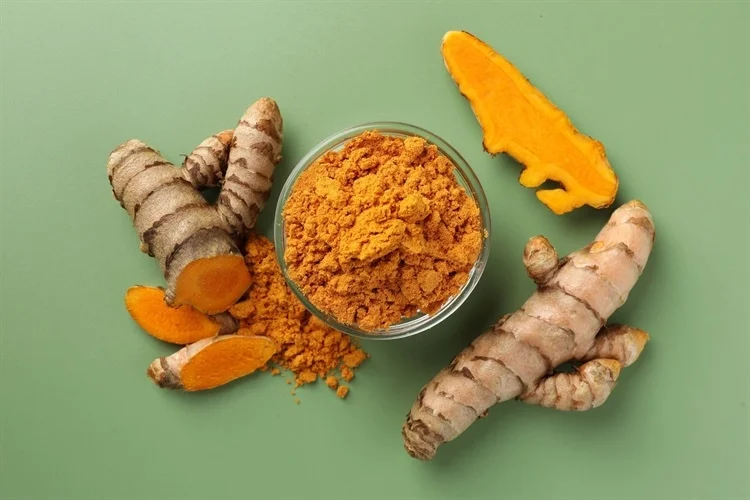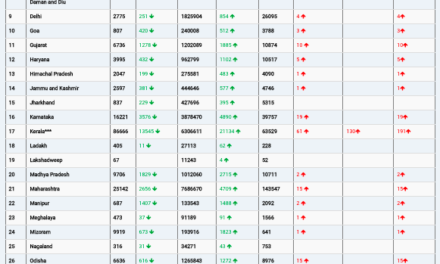November 6, 2024
A groundbreaking study published in Scientific Reports has uncovered a novel curcumin derivative, C210, that could offer a safer and more effective way to treat Epstein–Barr virus (EBV)-positive cancers by reactivating the virus in tumor cells. This new therapy could help selectively kill cancer cells without the risk of infectious viral production, a major concern with existing treatments.
Understanding Epstein–Barr Virus and Cancer
Epstein–Barr virus (EBV) is a tumorigenic virus linked to several types of cancer, including lymphomas and epithelial cancers like nasopharyngeal and gastric carcinomas. In many cancer cells, EBV exists in a dormant (latent) state, where it does not actively replicate. However, triggering the virus from this latent phase to an active (lytic) phase can lead to the death of cancer cells. This reactivation strategy has long been explored as a form of cancer therapy.
Current Challenges in EBV Lytic Induction
Therapies that activate the EBV lytic cycle—such as histone deacetylase inhibitors and proteasome inhibitors—hold potential for selectively targeting EBV-positive cancer cells. However, these therapies have limitations. While they can induce viral reactivation, they also risk generating infectious viral particles that could spread the virus or promote tumor growth, undermining their effectiveness.
A Promising New Approach: Curcumin Derivative C210
The new study, led by researchers from China, introduces a curcumin derivative known as C210. Curcumin, a plant compound commonly found in turmeric, has shown promise in triggering the EBV lytic cycle in cancer cells by inducing cellular stress responses. The researchers focused on C210’s ability to target heat shock protein 90 (HSP90), a molecular chaperone involved in stabilizing many oncogenic proteins, including some crucial for EBV latency.
Mechanism of Action
C210 works by inhibiting HSP90, which leads to the degradation of proteins required for EBV latency. Through experiments involving nasopharyngeal carcinoma and gastric carcinoma cell lines, the researchers found that C210 triggered the EBV lytic cycle without producing infectious virions, a major breakthrough compared to other therapies. The compound disrupts the interaction between HSP90 and its client proteins, such as STAT3 and XPB, leading to their proteasomal degradation. Notably, the depletion of STAT3—an important protein for viral reactivation—amplified the induction of the lytic cycle, while XPB degradation suppressed the production of infectious virions.
Combining C210 with Other Therapies
An exciting aspect of C210’s action is its ability to enhance the effectiveness of existing lytic inducers. When combined with SAHA, a traditional histone deacetylase inhibitor, C210 not only increases viral reactivation but also prevents the undesirable side effect of virion production. The synergy between C210 and SAHA suggests a promising avenue for combination therapy, amplifying antitumor effects while minimizing the risks associated with viral spread.
Implications for Cancer Treatment
This study highlights the potential of C210 as a safe and effective therapy for EBV-positive cancers. Unlike traditional methods that induce the EBV lytic cycle by promoting histone acetylation, C210 works by inhibiting HSP90 and activating XBP1 splicing, which triggers viral reactivation via a distinct mechanism. These findings open the door to the development of more targeted therapies for EBV-related malignancies.
The researchers recommend further preclinical trials to evaluate the safety and efficacy of C210, especially in animal models of EBV-infected tumors. With promising results already emerging, C210 could play a key role in the future of cancer treatment, offering a safer way to target EBV-driven cancers while avoiding the risks of infectious virion production.
Future Directions
The success of C210 in reactivating EBV without causing viral spread or oncogenesis could lead to the development of new lytic induction therapies for EBV-positive cancers. With ongoing research and clinical trials, C210 may eventually offer a more effective and safer alternative to current cancer treatments, revolutionizing the way EBV-positive malignancies are managed.
Journal reference: Chen, L., Guo, X., Lin, W., Huang, Y., Zhuang, S., Li, Q., Xu, J., & Ye, S. (2024). Curcumin derivative C210 induces Epstein–Barr virus lytic cycle and inhibits virion production by disrupting Hsp90 function. Scientific Reports, 14(1), 1-15. DOI: 10.1038/s41598-024-77294-w











